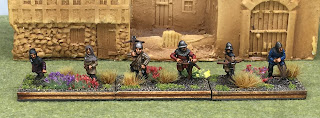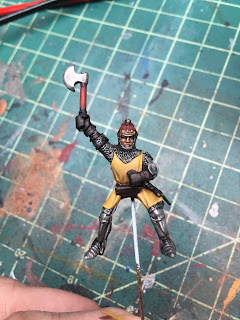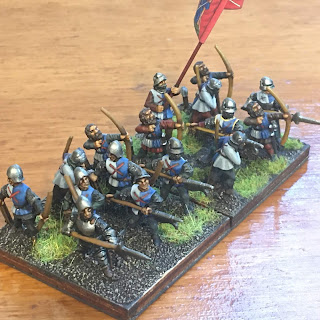There is something about living in mountain environments that creates hearty folk. The world over, on every continent, the most formidable peoples are usually mountain folk, Nepalese, Catalan Almogavars, Scottish Highlanders, Afghans and of course the Alemanni. The descendants of those fierce tribes that put even the mighty empire of Rome on its back feet would be first known simply as South Germans in the Middle Ages and are the peoples we come to know now as the Swiss. For 20 years I've enjoyed playing wargames commanding the most formidable infantry of late medieval Europe but typically I have focused on the League of Constance forces that destroyed the last of the Valois Burgundian Dukes and helped set the stage for what we would later think of as modern Europe. By the time of the Burgundian Wars the Swiss cantons had already established themselves as semi independent from the other powers of Europe and in victory ( and even rare defeats) built a reputation as fearsome fighters that gave no quarter to their enemies. The army I present is from a century earlier. These were the armies that cemented that reputation in a series conflicts with the Austrian dukes. Often referred to simply as "the Sempach Wars" after the final chapter of these battles was concluded with a decisive victory by the " Eternal Alliance" against Austrian Dukes and the Ecclesiastic allies. These are the 14th Century mountain men, the great great grandfathers of the most fearsome mercenaries in Europe at the end of the 15th Century.
My DBA Army:
Rather than start with a premade army from companies like Essex or Mirliton I decided to "curate" my pile of lead to create just the right look for the cantonal forces and picked the battle of Sempach as the date that I wanted my snapshot of an army to be dated. This is something I find helpful when working on historical armies. Rather than depict a generic army over a broad span of decades ( or in DBA often centuries) I'll pick a specific battle or commander, or year to build around. In this way I can have some specificity and focus on the look of the host. So for these fellows its 1386.
The Early Swiss for DBA 3.0 is a blade heavy army. Arguably one of the most blade heavy in the game. The Swiss are also a rare bird army in that the option exists to render blades as 6Bd. This unusual basing allows an army that is at once formidable but also bulked up and uncharacteristically "army looking" for a 12 element game.
Most of the models are Essex. There are a fair number of Alternative Armies ( Medus) as well as a sprinkling of Corvus Belli and Old Glory included. In order to create the correct feel of the troopers, I did some mild conversions with head arm and weapons swaps.
3 elements of psiloi form the Swiss vorlorne Haufe.
3 elements of 6Bd make up the Vorhut
The Gewalthut including war council and the main cantonal banners as general
3 more 6Bd elements make up the Nachhut.
The Eidgenossen fully arrayed.








































